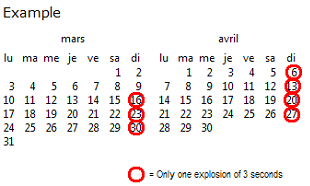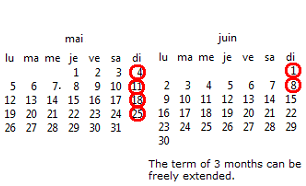The Kuriki method (the first edition in 2007) is a theory about Tourette’s syndrome (tic disorder) and obsessive-compulsive disorder to cure these diseases without medication. This theory is based on the author’s inference and interpretation regarding the structure of these diseases. Since it has been written for the psychoanalysts, reading will be difficult for people in general and it might be sometimes read erroneously. Therefore the Kuriki method must presuppose that the patient is treated by a nearby psychoanalyst, and that, between the patient and the Kuriki method, there is always the psychoanalyst. The explosion of emotional catharsis, which has strong repercussions, is done only for three seconds, once a week: beyond this rhythm, it would be an accident caused by negligence, and the psychoanalyst who is inexperienced in emotional catharsis must take responsibility for the temporary mental collapse caused by the accident. Also, to the patient who has weak capacity of logical reasoning, the psychoanalyst must explain well on the violent emotion of revenge caused by the illusory confusion between the person of the traumatic image in his head and the person in the real world.
Cure for Tourette’s syndrome (tic disorder) and OCD without medication
§02
Method of treating tic disorder and obsessive compulsive disorder, the Kuriki method shows;
1. how to find the psychological trauma,
2. how to do emotional catharsis,
3. the mechanism of tic disorder and obsessive compulsive disorder.
N.B.
– Some Freudian terms, which are used in the descriptions, have been defined very differently.
– The Kuriki method is not a sort of cognitive behavioral therapy, CBT.
– The Kuriki method is not a sort of hypnotherapy.
– The descriptions have no personal contents of particular patients.
– During treatment, very often a new manner of tic movement begins. The « compulsive intramuscular sensation » of tic is possible in all voluntary muscles and it is a characteristic of tic disorder that a patient can have more than two manners of tic movements and it ensures that the type of his disease is within the scope of the Kuriki method. It can be a proof of the fact that the « compulsive intramuscular sensation » of tic is not due to an organic problem of the nerves of the part of the body, and that the part of the body is randomly selected for the « compulsive intramuscular sensation » of tic. If there is only one body part in the antecedents of tic, the patient will need to distinguish on this body part between the neurotic disagreeable bodily sensation and the organic disagreeable bodily sensation.
– If there is an epileptic or dystonic element in a tic disorder, the Kuriki method is not a treatment for “epilepsy” or “dystonia”.
– While an obsessive-compulsive disorder may have an element of depression, «depression» is not within the scope of the Kuriki method. The Kuriki method is not a treatment of «depression».
– The Kuriki method does not belong to any religious group, any ideological group, any manipulation, etc.
– All the description of the Kuriki method is clearly ended at §50. The theory is complete and concluded.
– Trauma searching
When a tic or a compulsion has been recognized as a mechanism that distracts disagreeable bodily sensations (such as summer heat, fatigue of the legs, back pain, tension of the anal sphincter, the genital organs, etc.) from the Conscious, the psychological trauma will begin to be discovered automatically within weeks. The traumatic image has to be found concretely and specifically, however, in the Unconscious of a child who tends to have tic disorder, with any content of a trivial trauma, sooner or later, a big mass of emotion will be formed anyway. A child who is a little bit Asperger is not easily aware of traumatic things, when they are not expressed with words in the Conscious. The tendency to the formation of a mass of emotion is congenital predisposition and this tendency is independent of the content of the trauma. Events or things do not determine the formation of a mass of emotion: on the contrary, the formation of a mass of emotion requires a traumatic image as its theme. An unconscious trauma is the image of an ordinary thing in everyday life of a small child. A traumatic image for the patient’s Unconscious can be not traumatic for the Unconscious of other people. At least, the image is not considered traumatic by the patient’s Conscious. Except for the cases of perversion of everyday such as nudity, cutaneous contact, etc., normally, the person who is guilty of a trauma has no malicious intent. A child who ignores his emotion traumatic behaves happily by his repression.
– If there are more than one traumatic image, the mass of emotion will be formed like an onion, or a Matryoshka doll, having the oldest image at the center. In other words, there is only one mass of emotion and several traumatic images will be discovered in reverse chronological order.
– After the discovery of a psychological trauma, patients who have not enough thinking must be careful not to confuse the virtual world of the Unconscious of a small child and the real world of the Conscious of adults and not to become physically violent against the guilty person of the trauma.
– The traumatic elements in the memories before the age of five is not necessarily true.
– The necessity of the emotional catharsis for patients with tic disorder; children don’t do emotional catharsis, but adults need to do it. The discovery of the traumatic image and the verbalization of the traumatic emotion will not be enough for the abreaction when the patients have Tourette’s syndrome or obsessive compulsive disorder, as their hermeticity of the repression is very thick. Treatment of neurosis is an adventure: the patients must be brave. A very small hole of catharsis on the traumatic image will allow a slow release of the repressed potential emotion during at least three months. For the patients who have Tourette’s syndrome or obsessive-compulsive disorder, the abreaction can be done only intentionally. The function of repression is very strong and the emotional catharsis cannot be spontaneous. The mass of emotion is enormous. A too violent cathartic extraction will cause a transient discomfort because of a mental «subsidence», so, be careful. If unwisely you made a big explosion, you will have feeling of anxiety for ten minutes: in such a case, without panic, you will rest in bed for thirty minutes. Big explosion of emotional catharsis is prohibited. Emotional catharsis will be done once a week, only one small explosion of three seconds each time. This weekly catharsis should be done very regularly, being marked on the calendar.


